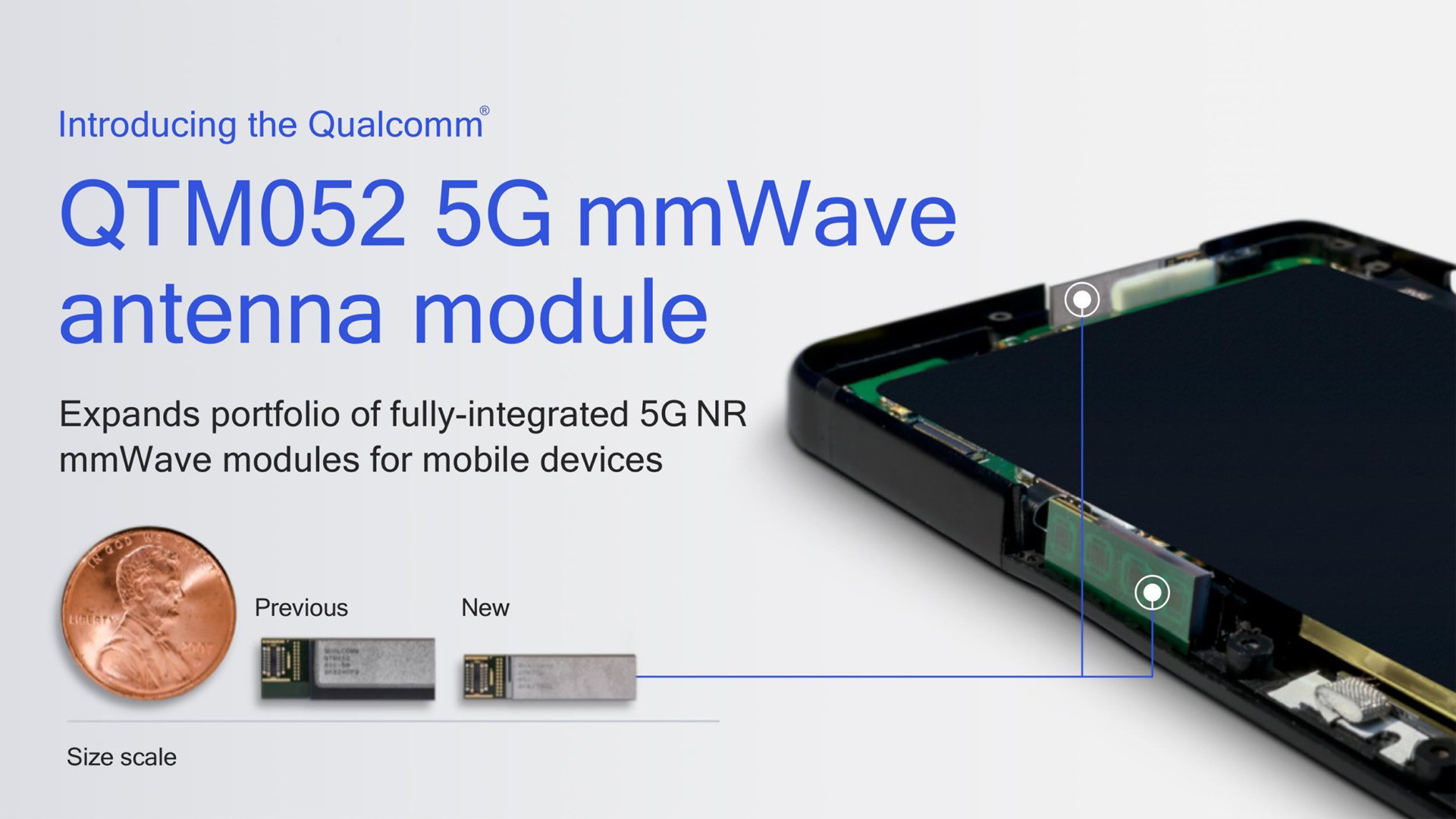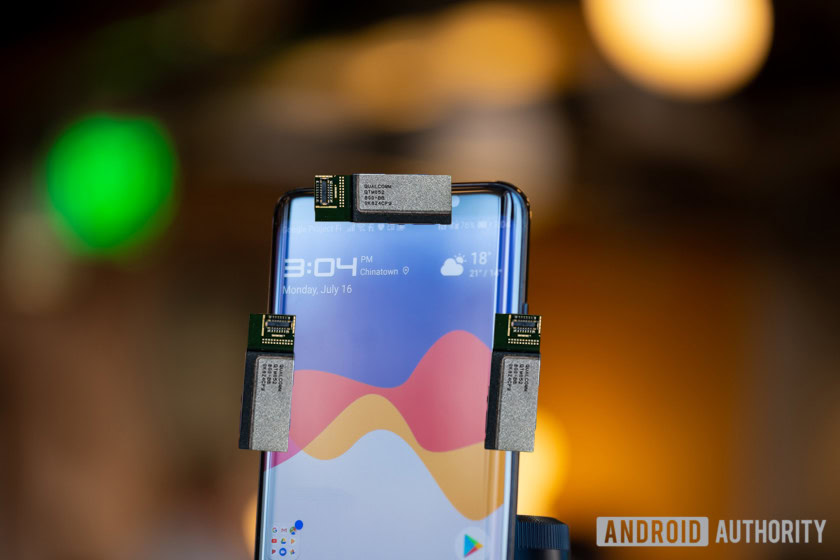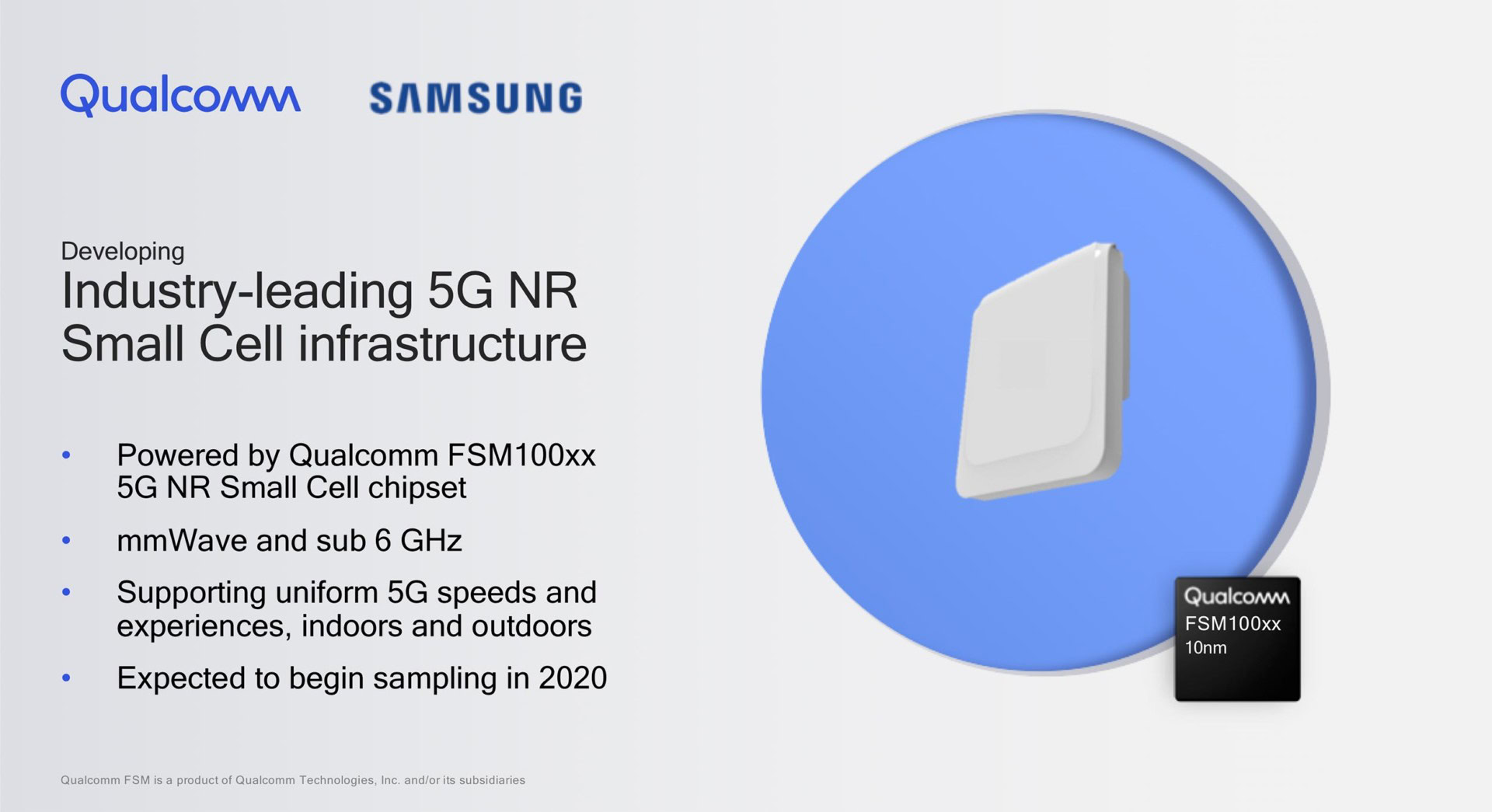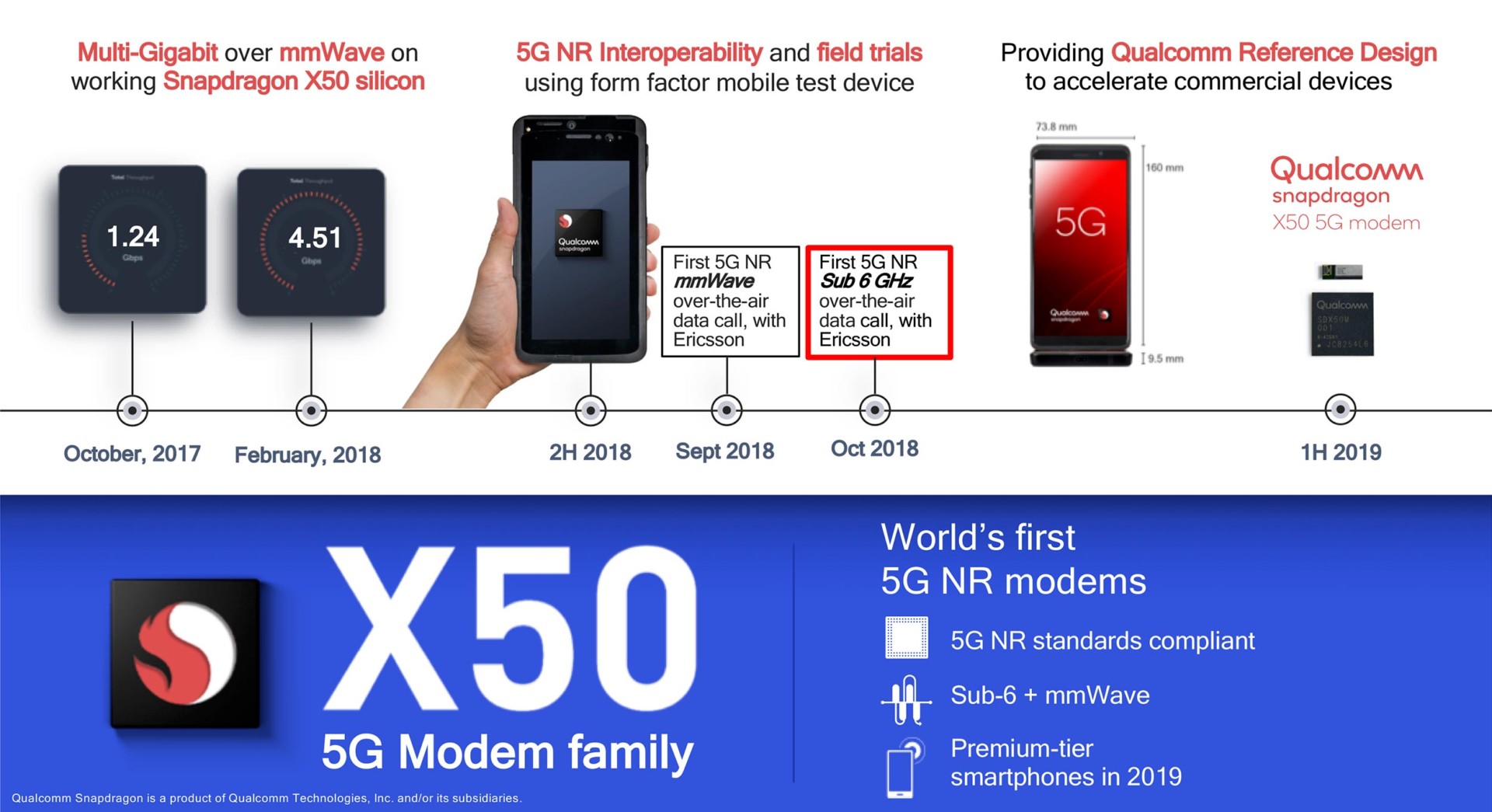Affiliate links on Android Authority may earn us a commission. Learn more.
Qualcomm shares advancements in 5G tech
Published onOctober 22, 2018

- Qualcomm reduced the size of its QTM052 5G antennas by 25 percent.
- Samsung will use Qualcomm’s FSM100xx chipset in its 5G Small Cell solution.
- Qualcomm and Ericsson conducted the first sub-6GHz call with a mobile form factor.
During Qualcomm’s annual 4G/5G Summit in Hong Kong, Qualcomm shared some advancements in its 5G tech. These advancements come just as we turn toward 2019, when 5G will become a commercial reality. Without any further ado, let’s see exactly what’s new.
Don’t miss: What is 5G, and what can we expect from it?

Smaller antenna modules
Qualcomm announced a major update to its QTM052 family of 5G antennas, the components required a handset to connect to 5G NR mmWave networks. In just three months, Qualcomm was able to reduce the size of these antenna modules by 25 percent. That may sound insignificant, until you recall that the first 5G smartphone designs will need to include these antenna modules.

Manufacturers rely on these critical components being small enough to implement into their thin smartphone designs. Any remaining space is of extreme value as it provides the opportunity to include a higher capacity battery.
As a consumer, this is exciting as it means fewer design compromises in the first 5G smartphones
By reducing the size of these antenna modules, Qualcomm is giving smartphone manufacturers more flexibility in how they implement them within their products. As a consumer, this is exciting as it means fewer design compromises in the first 5G smartphones.

Deal with Samsung to develop small cells
Small cells will be a key piece to the 5G platform, as they can offer extremely fast, ultra-low latency, and reliable connections. Since these small cells broadcast high frequency sub-6 and mmWave bands, however, many small cell units will need to be installed in order to take advantage of some of 5G NR’s most ambitious promises. This is especially true for “last-mile” deployments.
Qualcomm has announced it is collaborating with Samsung to create small cell units that utilize the FSM100xx
In May of 2018, Qualcomm announced a 10nm chipset designed for 5G NR small cell use: the FSM100xx. Now, Qualcomm has announced it is collaborating with Samsung to create small cell units that utilize the FSM100xx.
Qualcomm says that Samsung’s 5G Small Cell solution is expected to begin sampling in 2020.

First 5G NR sub-6GHz OTA call with Ericsson
In September, Qualcomm and Ericsson successfully conducted the first 5G NR mmWave over-the-air data call in a mobile form factor. That call was transmitted over both the 28 and 39GHz mmWave spectrum bands.
Now, Qualcomm has announced that it has also been able to conduct the first 5G NR sub-6GHz call in a mobile form factor, again with the help of Ericsson. For those interested, the call was conducted over the 3.5GHz frequency.
These calls are promising milestones that should help accelerate 5G deployment
This is important to the rollout of 5G, as it demonstrates Qualcomm’s compliance with the 3GPP Rel-15 spec. These calls are promising milestones that should help accelerate 5G deployment.
A bright future
Clearly, Qualcomm is well-positioned to help commercialize 5G during 2019. These announcements are very impressive, as they demonstrate rapid progress in the actual tech. With that said, there are still a number of challenges that remain for both Qualcomm and the general deployment of 5G NR. Hopefully, Qualcomm will be able to continue its work in facilitating 5G network deployment.
As a general consumer, it’s important to remember that the 5G platform involves multiple types of spectrum: mmWave, sub-6GHz, and aggregated LTE. Thus, we should expect the roll-out for 5G will be more like slowly turning a faucet rather than flipping a switch.